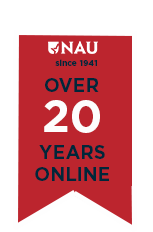Stay Safe Online – Protect your Zoom Meetings from Hackers

With everyone at home during the coronavirus outbreak, teachers, students, coworkers, friends and family are turning to Zoom to host face-to-face group meetings online.
According to Apptopia, Zoom usage ballooned from 10 million users in December 2019 to 200 million by March 2020. And all those people hanging out on Zoom means more opportunity for hackers. Zoombombing is now a thing, where hackers crash into public meetings, take control and share obscenities, hate speech or worse.
Don’t let trolls ruin your day! Here are a few simple safety tips to stay safe while staying connected.
Use a browser. Connect to meetings through your browser instead of the Zoom app for increased security. Chrome is recommended to get the best audio and video quality.
Don’t use Zoom invites. It’s safer to send a personal email to participants and include the meeting ID and password. That way they know it’s coming from a trusted source.
Don’t click on links from Zoom invites. These could be potential phishing attempts.
Don’t announce meetings on social media or other public forums. Instead, send private messages to participants using email or group settings in Signal, WhatsApp, or other messenger programs.
Password protect your meetings. This keeps out unwanted guests and ensures that only people invited by the host, with a password, can access the meeting.
Disable the “Join Before Host” setting. That way organizers can control who enters the meeting from the very start.
Use Waiting Rooms. This adds an extra layer of security by enabling the host to prescreen guests before they are admitted.
Keep an eye out for participants who shouldn’t be there. For larger meetings get a trusted participant to help keep track of who is coming in and out.
Lock a meeting once it’s underway. This will prevent unauthorized people from joining later. The organizer can also mute all participants, eject select participants, or stop select participants from appearing by video.
Control screen sharing. Adjust the user settings to prevent uninvited attendees from taking over the screen. Turn the screen sharing feature off if you don’t plan on using it.
Create a webinar instead of a meeting. This option creates a closed presentation and limits guest participation, so it’s less likely to be hacked.
Be aware of everything that’s within view of your camera. Before the meeting starts remove items that you don’t want others to see.
Remember that everything is being recorded. Don’t say anything or add text to a chat window unless you want it to be public knowledge!
These days it’s especially important to stay connected with friends, family, classmates and co-workers. If you need anything, we’re here to help! Just contact your Success Coach for assistance.



